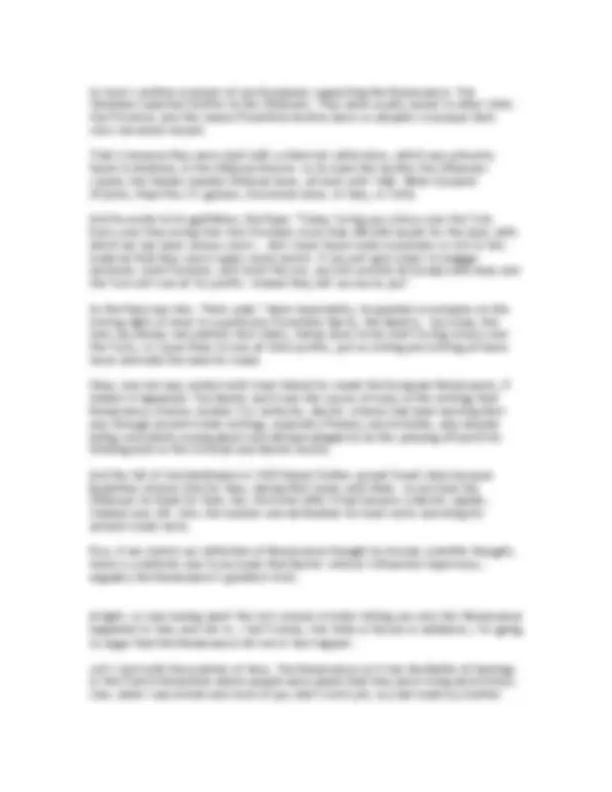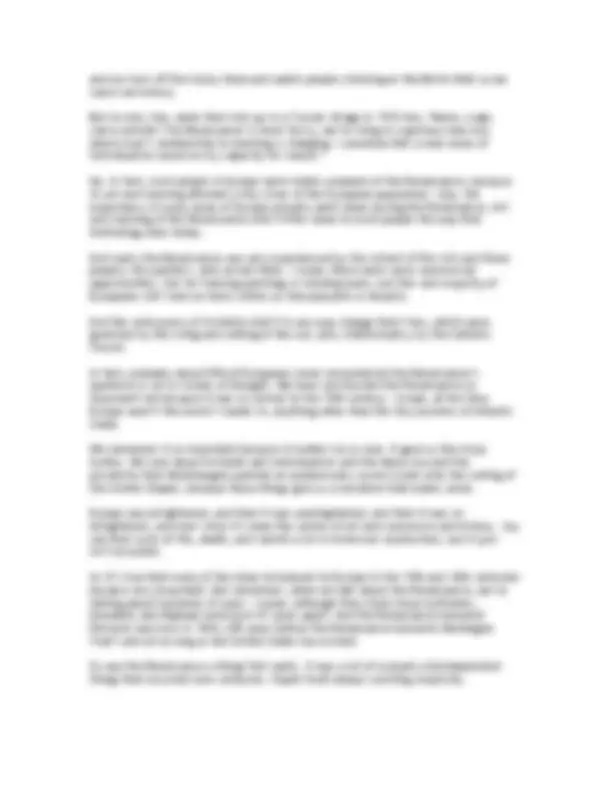




Study with the several resources on Docsity

Earn points by helping other students or get them with a premium plan


Prepare for your exams
Study with the several resources on Docsity

Earn points to download
Earn points by helping other students or get them with a premium plan
Community
Ask the community for help and clear up your study doubts
Discover the best universities in your country according to Docsity users
Free resources
Download our free guides on studying techniques, anxiety management strategies, and thesis advice from Docsity tutors
Essentially, the Renaissance was an efflorescence of arts (primarily visual, but also to a lesser extent literary) and ideas in Europe that coincided with the ...
Typology: Study notes
1 / 4

This page cannot be seen from the preview
Don't miss anything!



So you probably already know about the Renaissance thanks to the work of noted teenage mutant ninja turtles Leonardo, Michelangelo, Donatello, and Raphael. But that isn't the whole story. Me-from-the-past: Mr. Green, Mr. Green. What about Splinter? I think he was an architect. Ugh, me-from-the-past, you’re such an idiot. Splinter was a painter, sculptor, AND an architect. He was a quite a Renaissance rat. Right, so the story goes that the Renaissance saw the rebirth of European culture after the miserable Dark Ages, and that it ushered in the modern era of secularism, rationality, and individualism. And those are all in the list of things we like here at Crash Course. Yeah, fair enough. Then what's so controversial? Well, the whole idea of a European Renaissance presupposes that Europe was like an island unto itself that was briefly enlightened when the Greeks were ascendant and then lost its way and then rediscovered its former European glory. Furthermore, I’m going to argue that the Renaissance didn’t even necessarily happen. But first, let’s assume that it did. Essentially, the Renaissance was an efflorescence of arts (primarily visual, but also to a lesser extent literary) and ideas in Europe that coincided with the rediscovery of Roman and Greek culture. It's easiest to see this in terms of visual art, Renaissance art tends to feature a focus on the human form, somewhat idealized, as Roman and especially Greek art had. And this classicizing is also rather apparent in the architecture of the Renaissance which featured all sorts of Greek columns and triangular pediments and Roman arches and domes. In fact, looking at a Renaissance building you might even be able to fool yourself into thinking you’re looking at an actual Greek building, if you sort of squint and ignore the fact that Greek buildings tend to be, you know, ruins. In addition to rediscovering, that is, copying Greek and Roman art, the Renaissance saw the rediscovery of Greek and Roman writings and their ideas. And that opened up a whole new world for scholars as well, not a new world, actually since the texts were more than 1000 years old, but you know what I mean. The scholars who examined, translated, and commented upon these writings were called humanists, which can be a little bit of a confusing term, because it implies they were concerned with, you know, humans rather than, say, the religious world. Which can add to the common, but totally incorrect, assumption that Renaissance writers and artists and scholars were, like, secretly not religious. That is a favorite area of speculation on the Internet and in Dan Brown novels, but the truth is that Renaissance artists were religious. As evidence, let me present you with that fact that they painted
the Madonna over and over and over and over and over and STAN! Anyway, all humanism means is that these scholars studied what were called the humanities: literature, philosophy, history. Today, of course, these areas of study are known as the so-called dark arts. What? Liberal arts? Aw, Stan, you’re always making history less fun. I WANT TO BE A PROFESSOR OF THE DARK ARTS. Right. So here at Crash Course, we try not to focus too much on dates, but if I’m going to convince you that the Renaissance didn’t actually happen, I should probably tell you, you know, when it didn’t happen. So traditionally the Renaissance is associated with the 15th and 16th centuries. Ish. The Renaissance happened all across Europe, but we’re going to focus on Italy, because I want to and I own the video camera. Plus, Italy really spawned the Renaissance. What was it about Italy that lent itself to Renaissancing? Was it the wine? The olives? The pasta? The plumbers? The relative permissiveness when it comes to the moral lassitude of their leaders? Well, let’s go to the Thought Bubble. Italy was primed for Renaissance for exactly one reason: Money. A society has to be super rich to support artists and elaborate building projects and to feed scholars who translate and comment on thousand-year-old documents. And the Italian city states were very wealthy for two reasons. First, many city states were mini-industrial powerhouses each specializing in a particular industrial product like Florence made cloth, Milan made arms. Second, the cities of Venice and Genoa got stinking rich from trade. Genoa turned out a fair number of top-notch sailors, like for instance Christopher Columbus.But the Venetians became the richest city state of all. As you’ll remember from the Crusades, the Venetians were expert sailors, shipbuilders, and merchants and, as you’ll remember from our discussions of Indian Ocean trade, they also had figured out ways to trade with Islamic empires, including the biggest economic power in the region: the Ottomans. Without trading with the Islamic world, especially in pepper, Venice couldn’t have afforded all those painters nor would they have had money to pay for the incredibly fancy clothes they put on to pose for their fancy portraits. The clothes, the paint, the painters, enough food to get a double chin, all of that was paid for with money from trade with the Ottomans. I know I talk a lot about trade, but that’s because it’s so incredibly awesome, and it really does bind the world together.And while trade can lead to conflicts, on balance, it has been responsible for more peaceful contacts than violent ones because, you know, death is bad for business. This was certainly the case in the Eastern Mediterranean where the periods of trade- based diplomacy were longer and more frequent than periods of war, even though all we ever talk about is war because it’s very dramatic, which is why my brother Hank’s favorite video game is called Assassin's Creed, not Some Venetian Guys Negotiate A Trade Treaty.
and me turn off the Cosby Show and watch people climbing on the Berlin Wall so we could see history. But no one, like, woke their kids up in a Tuscan village in 1512 like, "Mario, Luigi, come outside! The Renaissance is here! Hurry, we’re living in a glorious new era, where man’s relationship to learning is changing. I somehow feel a new sense of individualism based on my capacity for reason." No. In fact, most people in Europe were totally unaware of the Renaissance, because its art and learning affected a tiny sliver of the European population. Like, life expectancy in many areas of Europe actually went down during the Renaissance. Art and learning of the Renaissance didn’t filter down to most people the way that technology does today. And really the Renaissance was only experienced by the richest of the rich and those people, like painters, who served them. I mean, there were some commercial opportunities, like for framing paintings or binding books, but the vast majority of Europeans still lived on farms either as free peasants or tenants. And the rediscovery of Aristotle didn’t in any way change their lives, which were governed by the rising and setting of the sun, and, intellectually, by the Catholic Church. In fact, probably about 95% of Europeans never encountered the Renaissance’s opulence or art or modes of thought. We have constructed the Renaissance as important not because it was so central to the 15th century. I mean, at the time Europe wasn’t the world’s leader in, anything other than the tiny business of Atlantic trade. We remember it as important because it matters to us now. It gave us the ninja turtles. We care about Aristotle and individualism and the Mona Lisa and the possibility that Michelangelo painted an anatomically correct brain onto the ceiling of the Sistine Chapel, because these things give us a narrative that makes sense. Europe was enlightened, and then it was unenlightened, and then it was re- enlightened, and ever since it’s been the center of art and commerce and history. You see that cycle of life, death, and rebirth a lot in historical recollection, but it just isn’t accurate. So it’s true that many of the ideas introduced to Europe in the 15th and 16th centuries became very important. But remember, when we talk about the Renaissance, we’re talking about hundreds of years. I mean, although they share ninja turtledom, Donatello and Raphael were born 97 years apart. And the Renaissance humanist Petrarch was born in 1304, 229 years before the Renaissance humanist Montaigne. That’s almost as long as the United States has existed. So was the Renaissance a thing? Not really. It was a lot of mutually interdependent things that occurred over centuries. Stupid truth always resisting simplicity.